
The Ssangyong Actyon Sports SUT is a pick-up truck that stands out among it’s competitors, and I’m not just talking about its somewhat unorthodox looks which resembles a shark with a gaping mouth, especially in white. But if you’re willing to put it’s looks aside and are interested to know more about the features and capabilities of the Ssangyong Actyon, look after the jump.
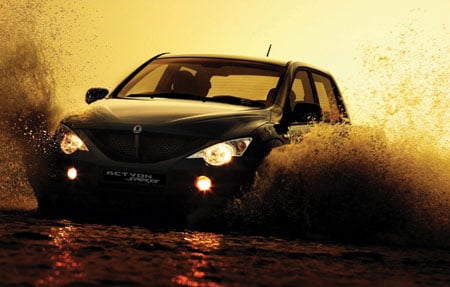
After you get over the brutal front, you’ll immediately notice that the Ssangyong Actyon Sports has a lower ride height than most of it’s pick-up peers to facilitate easier entry and exit into the passenger cabin. The cabin also seems larger, and the bedliner is shorter because of this. The test car we drove was the Ssangyong Actyon Sports with the automatic transmission, but it was from an earlier batch and the trim level isn’t really the same as the production Actyon that you will be able to buy in the showrooms. But no worries, I will mention what’s in the showroom cars and what are not.
Ssangyong took a different approach with the Ssangyong Actyon Sports truck and the Ssangyong Actyon SUV. Unlike Isuzu, Ford and Toyota who have made SUVs from truck-platforms (Everest from Ranger, Fortuner from Hilux, etc) you think of the Ssangyong Actyon as more of a truck derived from an SUV platform.
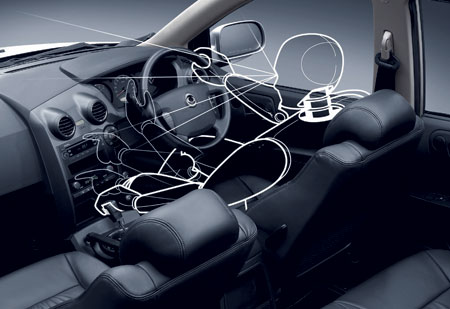

The nice interior is the most car-like of all the trucks I’ve driven, which is pretty much all the modern trucks except for the D-Max and Hilux. The electric seats and electrically adjustable and retractable wing mirrors are a welcome feature. The rear bench has three headrests and is slanted like a passenger car, and rear legroom is plenty unless you have someone big-sized sitting in front of you.
The footwell seems abit narrow for me, but other smaller sized people had no problems with it. I also noticed the lack of a footrest for your left foot in the automatic model is abit annoying, but Ssangyong says it can develop one locally for the production model. The combination of a lack of a foot rest and the narrow footwell made my left leg a little fidgety, it was like I didn’t really know where to put it. The leather seats could also do with abit more padding, especially the rear bench.
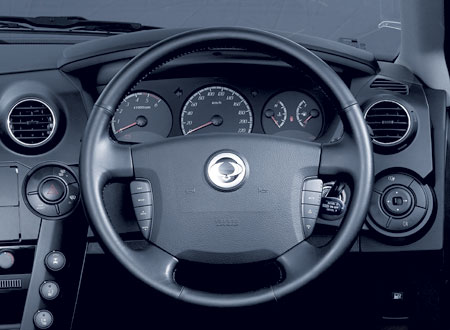
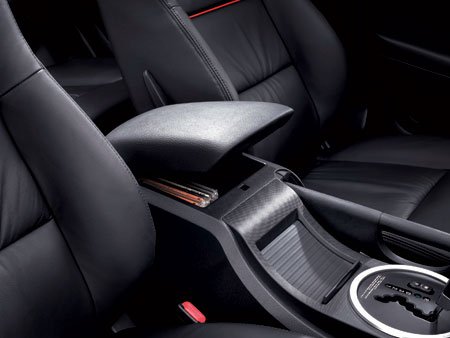
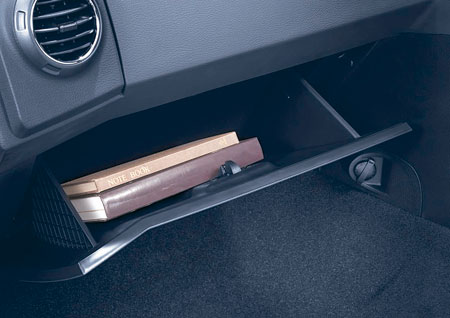
The 2H-4H-4L selector is a knob in a series of vertically-aligned knobs on the right of the center dashboard area. Our test cars had an automatic digital air conditioning panel but the production cars will have one of those usually three-knob manual aircond controls. You have two cupholders neatly hidden underneath a sliding cover, and a proper glovebox as well as another storage area in the arm rest. There is also a sunglasses holder and a ticket holder, as well as small compartments integrated into the door panel’s arm rests. The handbrake is in a strange position – on the left of the gear shifter instead of on the right. This might be a leftover from a cabin designed for left-hand-drive.
The dash is a mix of smooth plastic for the areas with dash controls and a nice soft plastic which you can push in slightly when you press your finger against it – one of those soft touch plastics. The large and luxurious-looking leather-wrapped steering wheel has audio controls.
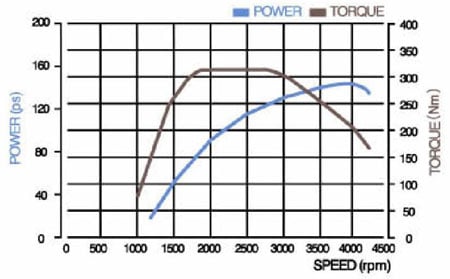
The engine and gearbox combo is not the same as the one in the Kyron, as the Kyron has a 5-speed auto while the Actyon only has a 4-speed, but the Actyon has a VGT turbine while the Kyron only has a normal turbocharger. The Actyon’s engine was amazingly smooth and vibration-free, which was very surprising for a diesel.
Being of a smaller displacement of only 2.0 litres, there was a noticable big pick-up in power in the first gear when the engine is still running off-boost, but right after 1,800rpm boost kicks in with strong force – you wouldn’t want to be caught doing a maneuver like a U-turn at low speeds when that happens because the back would surely swing. The speedometer would rise steadily until 100km/h, but you’d expect it to slow down after that but the torque just kept pushing the truck faster and faster until the pace started slowing down about 160km/h.
The XDi 200 XVT engine is a 4-cylinder third generation common rail direct injection turbodiesel with intercooler that puts out 141 PS at 4,000rpm, and 310Nm of torque between 1,800rpm to 2,700rpm. There are tuning chips in the market that easily push the 141 PS up to 168 PS. The engine is controlled by a 32-bit ECU and common rail injection pressure is 1,600 bar. It is very quiet from inside the cabin around the down at city driving speeds as the revs are kept very low thanks to the high torque – you only notice a loud diesel engine noise at higher RPMs nearer to the redline.
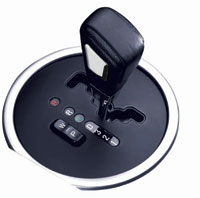 The 4-speed automatic gearbox had normal, power, and winter modes. The gear you are in is shown on the little LCD panel at the bottom of the triple-meter gauges – they move from 1 to 4. The only other automatic car I’ve seen that has this feature is the Mazda3 and Mazda6.
The 4-speed automatic gearbox had normal, power, and winter modes. The gear you are in is shown on the little LCD panel at the bottom of the triple-meter gauges – they move from 1 to 4. The only other automatic car I’ve seen that has this feature is the Mazda3 and Mazda6.
I think it is a smart gearbox somewhat, because if you put the pedal to the metal from a stand still the launch is somewhat slower than if you ease on the pedal gradually. This leads me to believe that in normal mode the gearbox actually tries to help make the launch as smooth and comfortable as possible, something it probably enherited from it’s Mercedes Benz roots. It probably detected flooring it probably would generate too much torque, thus cut down the power a little through the drive-by-wire system.
Top speed that we achieved was about 190km/h on a normal straight in the infamous Ladang Tihsllub introduced by Chips Yap (the straight roads in that area was amazing, I think even the boys at Top Gear would be jealous of us. They can have their airstrip! ;) ), but thanks to some downhill areas we got it up to 195km/h at about 4,250rpm, very close to the redline of 4,500rpm. I must say that the NVH in the cars we drove was really amazing for diesel truck or even SUV standards, for wind noise was missing all the way up to speeds of 170km/h where it started getting abit noticable.
The steering wheel was a rack and pinion setup and had good feel to it – it wasn’t laggy or dampened or anything. Ride was pretty much like an SUV, and road surface inconsistencies caused some bounciness but it wasn’t anything harsh.
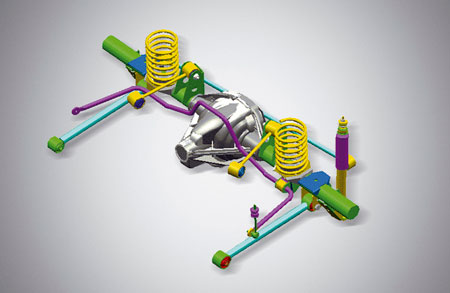
A coil spring setup instead of a leaf spring setup contributed much to it’s SUV-like comforts, plus according to Steven Sim who runs a 4X4 shop and organized the off-road session of the test drive, coil springs offer better articulation of the wheels, so offroad performance can be quite good as long as you take the usual strenghtening steps with proper mud tyres, raised ride height and strenghtened shocks. Also responsible for it’s handling and comfort are it’s a 5-link rear axle at the rear and double wishbone setup at the front.
As for safety features, the steel ladder frame chassis has a triple layer contruction and the truck body is reinforced to work as a safety cell for collisions. The steering wheel column is collapsible, and the doors have side impact beams. The doors lock automatically once the vehicle reaches 50km/h, but also unlock automatically in a collision. There are driver and front passenger SRS airbags, and the seatbelts have pre-tensioners with load limiters – they tighten up at first in a collision and then the load limiter loosens it progressively as the airbag deploys. Also present is four-wheel ABS, and there are disc brakes all-round on all four wheels.
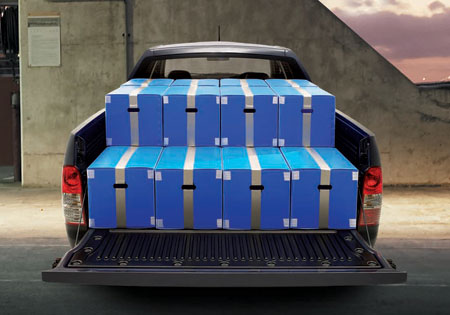
The bedliner at the rear is shorter than most trucks but is wider and deeper, and can carry a payload of up to 898kg although Ssangyong is developing an enhancement to bring it up to the regions of 1,100kg. There will be three enhancements for the bedliner – one is a sporty D-pillar for aesthetic purposes which greatly enhances the looks of the truck and I recommend that everyone get it, and the other two is still being developed which is a half-cover, and a full cover for the bedliner.
Other neat features include a mobile illuminated ashtray, remote keyless entry, and an automatic lights-off system to save your battery from going flat if you accidentally leave your lights on when you get out of the truck. Also, one thing I’d consider a “feature” is it’s low displacement of 2,000cc compared to it’s 2.5 litre and 3.0 litre peers. For example, you’d have to pay RM439.20 for the Actyon’s road tax compared to RM898.00 for the Mitsubishi Triton’s road tax per year. It’s also so much lower than the 3.0 litre D-MAX’s steep RM1,878.10’s road tax cost!
The locally assembled Ssangyong Actyon with automatic transmission goes for RM91,989.20 for private registration exclusive of insurance, which costs an additional RM2,627.90 for an insured value of RM91,000 and also a further RM300 for front windscreen insurance. The aesthetic D-pillar I mentioned goes for an extra RM1,120, and is highly recommended as I think it enhances the side-profile look alot. The standard truck comes with cloth seats, but real leather seats (none of those PVC stuff) costs an additional RM1,480. A cheaper 5-speed manual specced more as a workhorse will be offered later and will only have one airbag, drum brakes and the rear, no electric seats, etc.
In standard form, the Ssangyong Actyon Sports does not come with an LSD differential, but Ssangyong says if the customer wants an LSD it will be fitted with no extra cost. However the customer will be adviced to equip the Actyon with an LSD only if he takes the car off road often and it is one of the primary purposes of the customer buying the vehicle. This is because if the Actyon Sports spends most of it’s mileage on paved roads, the LSD usually wears out prematurely – something to do with the grip on paved roads being too much and not allowing enough slip or something, causing wind-up. I think 4X4 guys should understand this better.
I think it’s very capable as a lifestyle vehicle – just pop the full or half cover on the back and treat it as a jacked up sedan that has great diesel fuel economy and a higher ride height to tackle those floods that are happening more often lately. You just have to get over the different styling first, the same problem some have with the Honda City.
Click any of the photos below to view an enlarged version.
Looking to sell your car? Sell it with Carro.

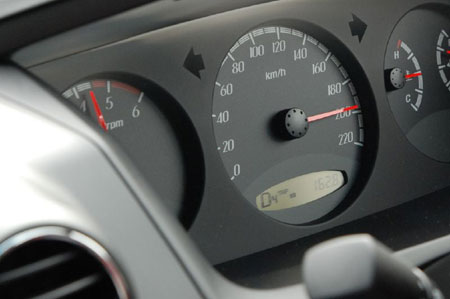

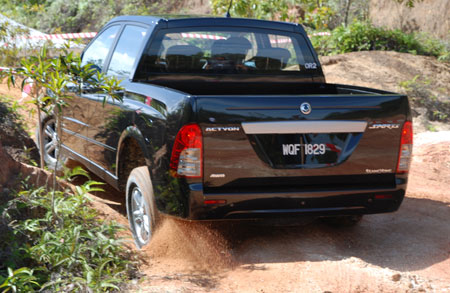
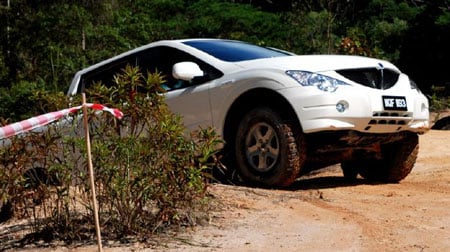
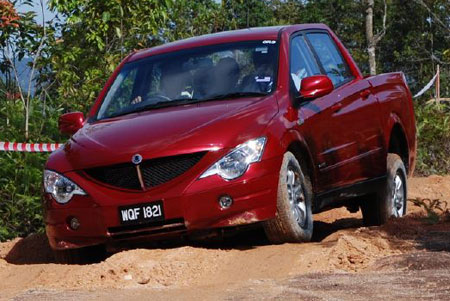

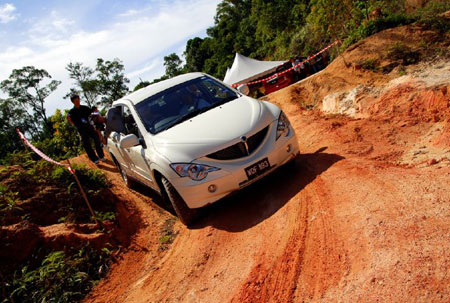
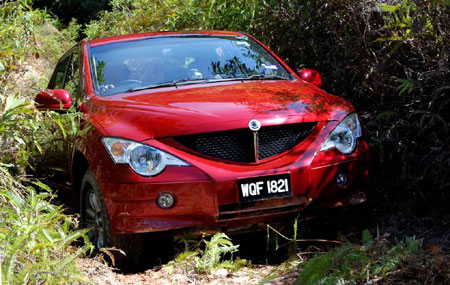

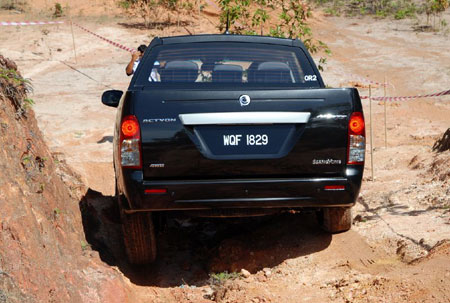
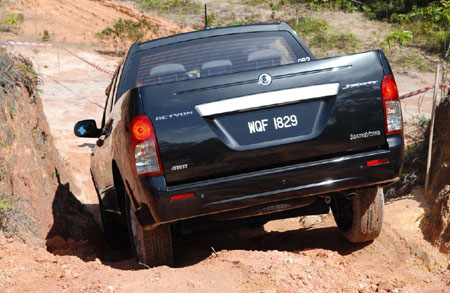
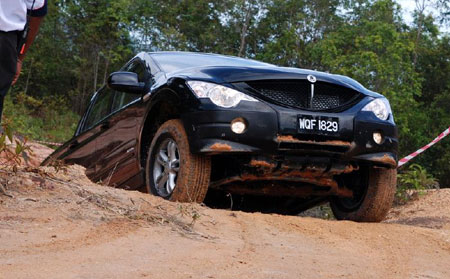
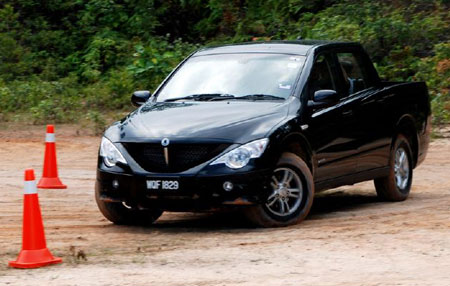
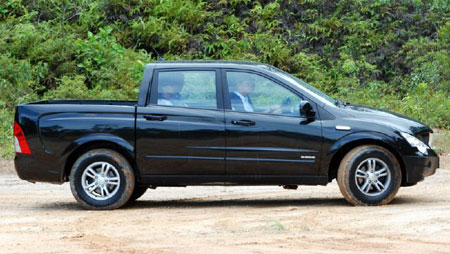
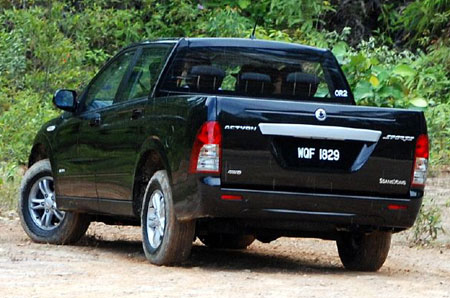
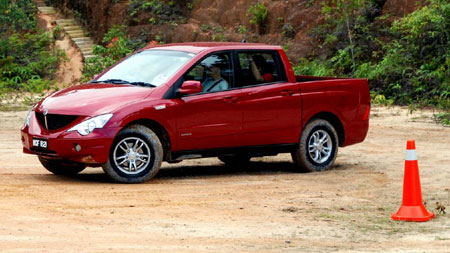
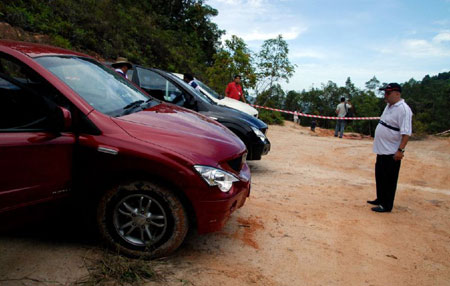
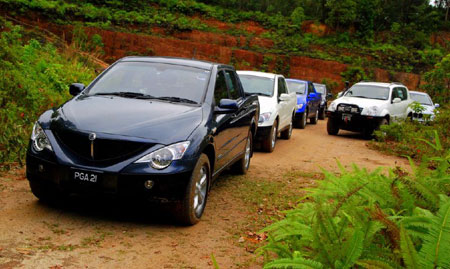
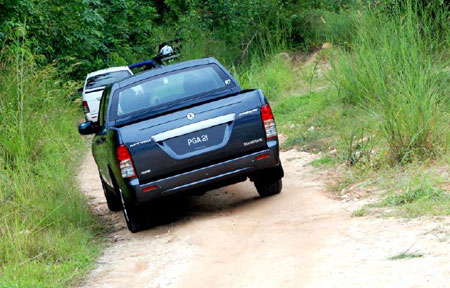

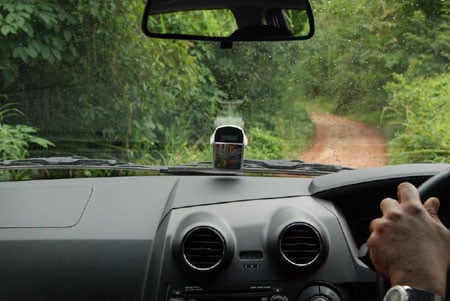

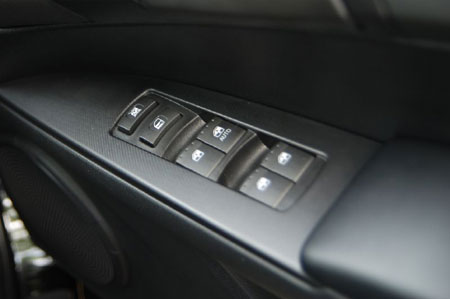
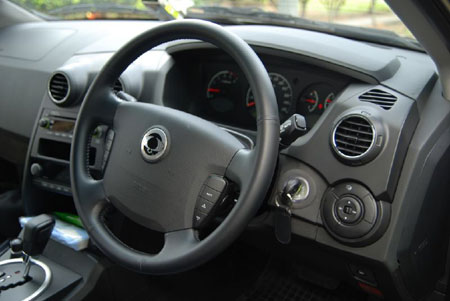
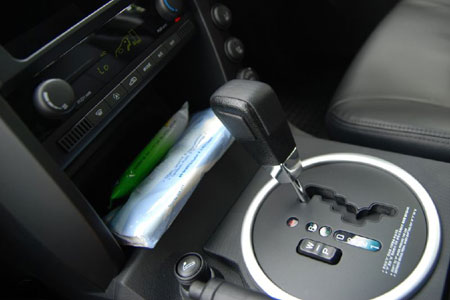


AI-generated Summary ✨
Comments reflect a generally positive impression of the Ssangyong Actyon Sports pickup, highlighting its impressive power, features, and more comfortable ride due to its lower height. Many users discuss potential accessories and modifications, especially for aesthetics like body kits and canopies. Concerns about pricing, especially with accessories pushing the cost above RM 100K, and comparisons with other pickups like Hillux and Triton are common. Several comments note its unique, bold design, which some find attractive and others less so, criticizing the front grille and overall look. There is also interest in parts availability, reliability, and fuel consumption; some express skepticism about Korean vehicle aesthetics but appreciate its value and performance. Overall, the truck is seen as a compelling, feature-rich option that appeals to those seeking a practical yet distinctive vehicle.